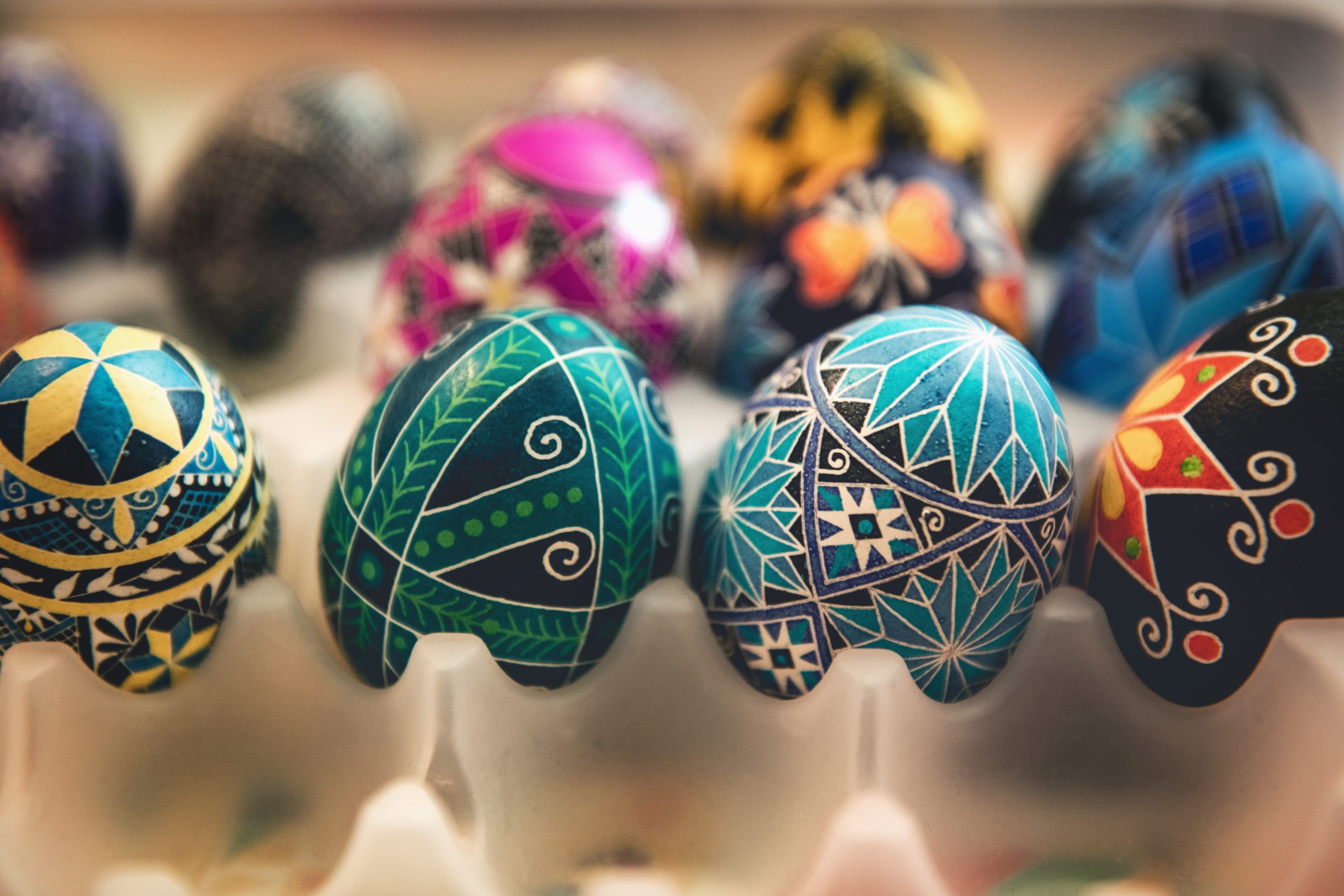How to Reuse Eggshells: 4 (Legitimate) Uses for Chicken Eggshells in Your Home and Garden
Healthy, delicious eggs are one of the biggest benefits of owning your own backyard chickens. That doesn’t mean you should stop at their contents, though – the eggshells can be useful, too! While it’s a bit of a pain to repurpose them compared to simply throwing them away, we think you might change your mind after seeing all the ways they can be beneficial.
1: Feed Eggshells to Your Chickens
Most chicken owners already know the number one way to reuse eggshells: feeding them back to your hens! Hens require large amounts of calcium and other minerals in their diets to be healthy. They need these minerals to form the hard shell when they lay an egg. Without proper nutrition, they might lay weak eggs, not lay at all, or face serious health problems.
It follows, then, that one of the best ways to deliver these nutrients to your hens is to give their own eggshells back to them! Eggshells make an excellent calcium supplement, and they provide a variety of other important vitamins and minerals, too.
However, we don’t recommend just throwing whole eggshells back into your chicken coop for them to pick at (some people do this with success, but we don’t think it’s a good idea). Not only is it tough for our chickens to break apart and eat whole eggshells (and you don’t want them swallowing any sharp edges, either), but you don’t want them associating whole eggshells with food. Egg eating can be a problem in chickens, and while the behavior is treatable, the best solution is to avoid it in the first place.
When we want to give eggshells back to our hens, our go-to method is to dry and crush them first. Technically, you don’t have to dry the eggs first, but we find that it’s easier that way – otherwise, the membrane inside can make it hard to crush them. There are lots of ways to dry eggshells, such as baking them in the oven on low heat or using a food dehydrator. We just leave ours on the counter to air-dry for a few days. You can also leave them out in the sun during the summer for great, low-effort results.
For pulverizing, we use an old food processor from our local secondhand store. We wouldn’t recommend using your actual blender for this – the crushed eggshells can be tough to clean out of nooks and crannies. Keeping a dedicated appliance just for eggshells makes the cleanup process much easier. You can also crush them manually with a mortar and pestle, a rolling pin, or even the backside of a spoon.
Once you’ve thoroughly crushed the eggshells, just sprinkle them onto your chickens’ feed or leave a free choice dish in your coop for them to access.
2: Bury Eggshells in Your Garden
Did you know that you can use eggshells in the garden? If you’ve ever wondered if eggshells are good for plants, you had the right idea. Eggshells make a great general additive to compost and soil. However, it can take several years for them to break down completely, so some people use different methods or hacks to make the nutrients bioavailable right away.
Eggshells for plants can be an extremely effective supplement to counteract specific mineral or pH needs. Tomatoes, for example, sometimes need extra calcium to prevent blossom end rot. Passing that calcium from your eggshells to your tomatoes is as easy as burying them near (or underneath) the plants.
You can also try soaking old eggshells in a jar of water instead of burying them. This works fantastically for indoor plants in particular. Over time, calcium and other nutrients will leach from the shells into the water, and whenever you use that water on your houseplants, they’ll get a nice mineral boost. You can do this with the water from hard-boiling eggs, too – just make sure you let it cool completely first!
You can also use eggshells as seed starter containers! Eggshells can make great little “buckets” to start your seeds in. Plus, eggshells can go directly into the soil once your seedlings are ready for transplanting. If you do this, carefully crack each eggshell before you plant them in the ground, since they might cause your seedlings distress if their roots can’t break through the shells.
You also might have heard that eggshells work as pest control in your garden, since slugs and other creepy crawlies don’t like crawling over them. Unfortunately, all of the gardeners that we follow say that this doesn’t work – slugs and snails will crawl right over them without a problem. Plus, those same eggshells could end up actually attracting pests! We don’t recommend scattering them in your garden unless you grind them into a fine powder first.
If composting is your passion – like it is mine – and you want to find more ways to reduce your waste, I highly recommend checking out what Pela has to offer. Pela Case is a fantastic company that makes completely compostable phone cases. Yes, you read that right – compostable phone cases. (Plus some other biodegradable accessories like AirPods skins and sunglasses.)
Pela’s compostable accessories are made with flax straw. The straw is a byproduct of flax oil production, but it makes a sturdy and eco-friendly filler for Pela cases. The rest is a plant-based biopolymer.

Pela says that over 80% of their phone cases are made in Saskatoon, Saskatchewan, Canada. The rest of their cases, as well as their other accessories, are manufactured in China.
While you know I prefer USA-made products, Pela has won me over. I’ve personally used a Pela case on my phone, and I’ll continue to do so as long as they make one that fits my current device (and as long as they keep making cute cases, of course). I really think they’re on to something here, and I look forward for what else Pela comes up with in the future.
– End of Sponsored Ad –
3: Give Eggshells to Your Pets
Can dogs eat eggshells? Yes, and so can your other pets! We love giving whole eggshells to our dogs as fun, engaging treats. As weird as it might sound, they love to crunch on them! We only do this with clean, washed eggshells that come from our own chickens.
Our dogs are on the large side, so they don’t have any trouble crunching up an egg shell or two. However, keep in mind that this may be an issue for smaller dogs and other pets. Not all dogs enjoy eggshell “treats” either, in which case crushing them and mixing them with your pet’s food may be more effective.
Eggshells for dogs are a great, low-waste, low-effort solution if you don’t have the time to dehydrate and return them to your hens. Plus, when we have eggs that might not be too fresh, but are still safe to eat, we’ll put a whole egg right on top of our dogs’ food, shell and all.
We wouldn’t recommend giving whole eggshells to cats, but cats that aren’t too picky may enjoy them crushed and mixed with their food.
Are eggshells good for dogs? Well, they’re not bad for them, but they contain a lot of calcium – more than some dogs may need. Always ask your vet whether eggshells are safe for your dog or cat before supplementing, especially if they have dietary restrictions or sensitive systems.
4: Decorate Your Eggshells for Crafts
Eggshell decoration is a tradition all over the world, especially around the Easter season. In America, most people choose to take whole eggs and dye them, but if you don’t mind a little extra work, you can create a long-lasting keepsake by dying just the shell.
Wikipedia says that eggshell decoration dates back to Pagan times and, specifically, Slavic culture as a whole, but here at the Farm, we learned about it from the Ukrainian tradition of Pysanky. In Pysanky, the artist carefully makes a small hole in one end of the shell (or both ends – this makes the removal process easier, but also makes the final product less desirable). After making the hole(s), the crafter carefully removes the white and yolk by either blowing air through the egg or using a special tool to extract them.
When you remove the innards of the egg and dry the shell out, you create a shelf-stable keepsake that will last for years to come. In Pysanky, an artist uses wax to protect parts of the egg from dye, and through a repeated dying process, creates intricate and beautiful designs on the shell (see the picture at the beginning of this section for some incredible examples).
While you might not have the patience to put that much effort into decorating your Easter eggs, we definitely recommend at least preserving them, especially if you plan to decorate as a family activity. What better way to create lasting memories? Just keep in mind that white eggs will be the easiest to decorate – if you only have brown eggs, you may have to get a bit creative with the dyes and methods you use.
Final Thoughts
Have you ever considered reusing eggshells? If not, we hope this post opens your eyes to some of the possibilities! After all, eggs themselves are an incredibly useful resource, and using every part of what we grow and eat is an important goal here at Little Onion Farm. Not only does it help us become more sustainable and more self-sufficient, but it keeps landfills emptier, too. Eggshells do degrade naturally and enrich the soil, so you don’t need to feel guilty if you do throw yours away, but your garden is an even better place to put them!
Do you have any legitimate ways to use eggshells in your home and garden that we didn’t mention here? If so, feel free to let us know!
Cover art for this post was created by Caroline Attwood.
This article may contain affiliate links and advertisements. If you make an online purchase after clicking one of the links in this article, we may receive a commission. As an Amazon Associate, Little Onion Farm earns from qualifying purchases. All of the logos, photographs, banners, and links in this post are the intellectual property of their respective owners, and are used to promote our affiliate partnerships. Thank you for supporting Little Onion Farm and our partners!
Copyright © 2025 Little Onion Farm – All Rights Reserved.




